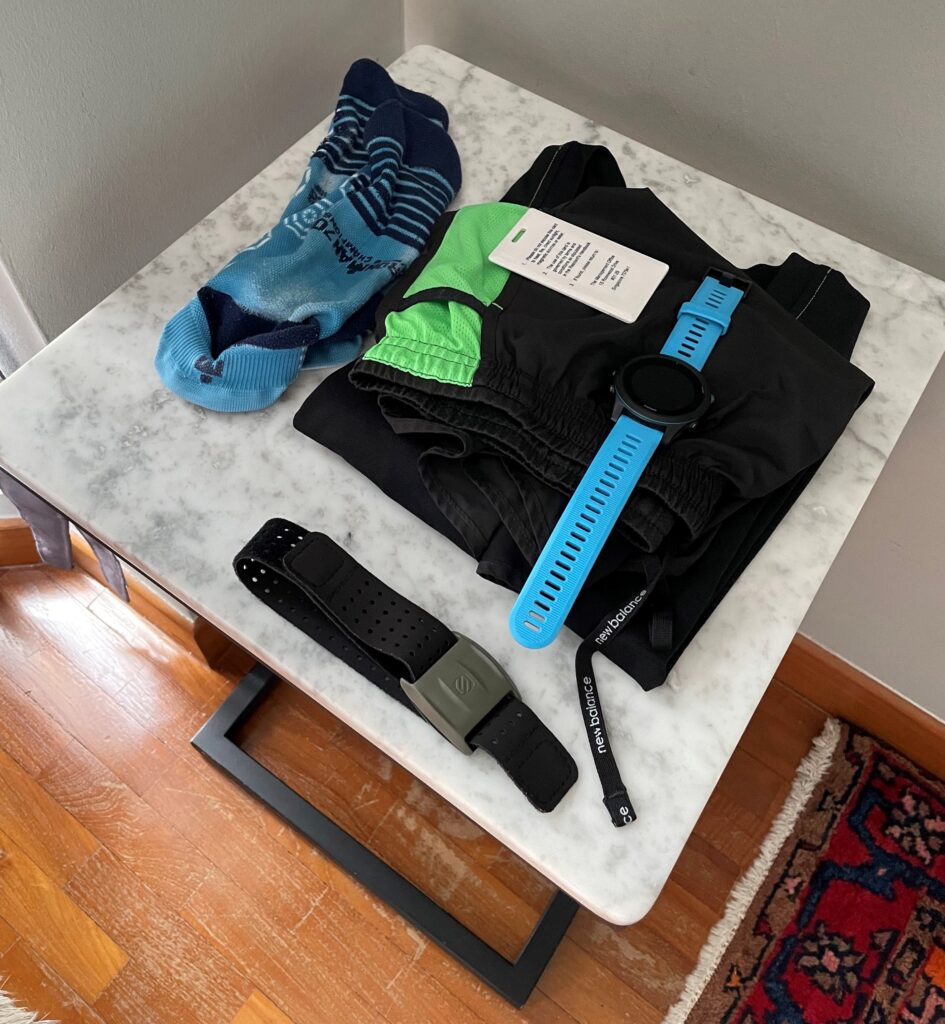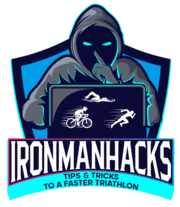Not long after I began running seriously, I started getting my running stuff ready the night before. Shoes, shorts, shirt, socks, watch, heart rate monitor, whatever I needed.
I didn’t realize it at the time, but this was all about reducing friction, or unnecessary effort in my way.

The fact that I didn’t have to search for a matching pair of socks in the dark or find the right shorts or shoes in my pre-dawn stupor made it a lot easier to get out there and run.
The same with cycling. I’m sure most of you get your bike ready the night before, too.
I pump my tires, fill my bottles, and mount my lights. My helmet’s hanging from the bars and my shoes are at the door well in advance.
Early morning is when many of us would very easily give in to another half hour, hour, or two hours of sleep.
Or use the excuse that you have the wrong wheels on your bike as a reason to go back to bed.
Recently, I read an email from Steven Kotler, author of many books including The Art of Impossible (affiliate link), which I’ve written about a few times, and I know a few of my subscribers have read.
In the email, Steven talked about how eliminating friction makes things “cheaper” to do.
He states, “…the more an action ‘costs’ – especially when we don’t experience an immediate reward – the harder it is to do.”
“And evolution programmed your brain to be stingy with its resources.”
So while it is obvious that getting your stuff ready the night before it wasn’t until he explained it this way that I understood why.
Other friction-reducing actions I take include:
- Mixing and measuring my nutrition the night before and lining it up on the table or in the fridge
- Building any structured workouts I have coming up days in advance and synching them to my Garmin or Zwift. Don’t want to be doing that the morning of the workout!
- Keeping a swim bag always at the ready with goggles, pull buoy, fins, snorkels, and towel – no excuses when I don’t want to do that swim!
- Plugging in all my devices right after a workout (Garmin, Wahoo, heart rate monitor, bike lights) to ensure they’re charged at all times
- Putting my house key and some cash in my jersey or shorts pocket the night before
Reducing friction is great, but Steven takes it one step further. He explains that we can also impose more friction elsewhere in our lives to make it harder to do less desirable things.
Examples he gives include:
- Install a website blocker and have your spouse or accountability partner set the password so you have no option but to work.
- Throw out your junk food so the only way to get your sugar fix is to get in the car and drive to the gas station.
- Unplug your TV and store the cable in the trunk of your car.
- Delete your credit cards from sites like Amazon and eBay so you have to re-enter your information instead of buying with “one click.”
It’s a bit harder for me to think of how I have deployed friction to improve my training, but things I can think of include:
- At a certain time, close to bedtime, switch your phone to night mode or automate it to disable certain apps then
- Keep your phone away from your bed at night
- Keep your alarm away from your bed also, which will force you to get up to turn it off
- Don’t even buy foods you want to cut back on
Dr. Alex Harrison chimed in with his thoughts, which are very similar. He writes:
The way that I get myself to eat healthy meals regularly:
I make sure that the healthy meals are the easiest thing to eat, in my entire house.
Anything else that’s less healthy, either doesn’t get to come in my house, or I make it much harder to access, and need to make the healthy meals very easy to access. Here are some of the steps I take to make sure that all happens:
- Fully preparing foods to be scooped out into a bowl from a batch-prepped source (non-fat lentil chicken soup in bulk!? that’s what’s often in my fridge).
- Hiding the peanut butter in the garage (along with the pecans and any other tasty baking goods that I’m not supposed to eat).
- Just not having baking goods/toppings in the house, and only buying them as needed. I initially thought that this would create waste, due to store trips, inefficiency, etc. The only thing it’s created has been LESS spending on calorie-dense junk and a healthier me! (much to my amazement)
- Put the leftover higher-calorie tasty food that we know we’ll eat too much of, in the back of the fridge, instead of the front. That way when I go to grab something out of the fridge I’ll at least be reminded that “this is in the back of the fridge because I put it there to make it harder to access.” Better yet, much of the time, when I’m the MOST tired I will literally be deterred from digging to the back of the fridge to get the food I shouldn’t eat a ton of, and will just grab the more appropriate food choice from the front of the fridge. It sounds absolutely ridiculous when written out in an email, but in a fatigued-and-hungry moment, it can laughably make the difference.
The way I sort of conceptualize all these (and other) steps I take to make sure I choose healthier options is:
- Try to increase barriers to the choices you’re trying to avoid in the future, and try to lower/reduce/eliminate the barriers to the choices you’re trying to get yourself to make in the future.
- Think about yourself and the choices you make when you’re the most worn out. That might help identify where in your life your future self could benefit from greasing the rails a bit.

Leave a Reply
You must be logged in to post a comment.